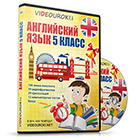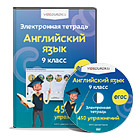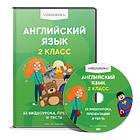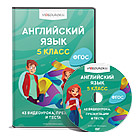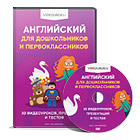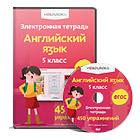Reading and listening test "in harmony with the world"

Список вопросов теста
Вопрос 1
1. Listen to the dialogue twice, and complete the following statements.
1. Canada’s population is not proportional to the size of its territory.
a) the second largest in the world
b) the second smallest in the world
c) proportional to the size of its territory
d) not proportional to the size of its territory
2. Canada’s motto is “From sea to sea”.
a) “From ocean to ocean”
b) “From sea to sea”
c) “From shore to shore”
d) “From east to west”
3. In their free time Canadians enjoy looking at whales out of interest.
a) hunting whales
b) feeding whales
c) looking at whales out of interest
d) looking for whales in the ocean
4. Canada has a lot of lakes and rivers.
a) minerals
b) waterfalls
c) greenery
d) lakes and rivers
5. The Niagara Falls belong both to Canada and the USA
a) to Canada
b) to the USA
c) both to Canada and the USA
d) neither to Canada nor the USA
6. The Niagara Falls attract crowds of newlyweds
a) photographers
b) newlyweds
c) athletes
d) artists
7. Mr Weaver advises Peter to visit Canada’s parks
a) parks
b) forests
c) Arctic territory
d) northern territory
1.
a
2.
b
3.
c
4.
d
Варианты ответов
- 1. Canada’s population is not proportional to the size of its territory.
- 2. Canada’s motto is “From sea to sea”.
- 3. In their free time Canadians enjoy looking at whales out of interest.
- 4. Canada has a lot of lakes and rivers.
- 5. The Niagara Falls belong both to Canada and the USA
- 6. The Niagara Falls attract crowds of newlyweds
- 7. Mr Weaver advises Peter to visit Canada’s parks
Вопрос 2
Read the texts (1—7) and match them with their titles (a—h). There is one title you don't have to use.
a) Land of Many Tongues
b) Home Acquired Again
c) Country of Ice and Snow
d) Source of Inspiration
e) Variety and Unity
f) Hardworking City
g) Hospitable City
h) Travellers from Far Away
1. Historically, Canada has been influenced by British, French and aboriginal cultures and traditions. Many Canadians see their country as a multicultural mosaic — a collection of several regional, aboriginal, and ethnic subcultures. For example, aboriginal peoples continue to influence the Canadian identity through their language, art, and music. At the same time English influence is stronger in English Canada while French influence dominates in French Canada.
2. Ottawa, the capital of Canada, is one of the country’s most attractive cities. It’s the public face of Canada for many people so the city has been kept lovely and welcoming. It has many parks, museums, art galleries and universities. Some of Ottawa’s historic buildings go back to the early 1800s.
3. About 77 per cent of Canadians live in cities and towns. The largest city in Canada is Toronto. If you ever go there, you’ll see one of the world’s tallest buildings, the CN Tower. Toronto is the country’s business centre and home to the largest companies and banks.
4. Canada’s official languages are English and French. But many other languages are spoken there, including Inuktitut (the language of the Inuit, or Eskimos) and other Canadian Indian languages. Canadian Indians are also known as First Nations people.
5. In 1999, one half of Canada’s territory was officially returned to the Inuit people. The name of this new territory is Nunavut. In Inuktitut it means “Our land”. The Inuit live throughout most of the Canadian Arctic and subarctic in the northern third of Quebec, in Labrador and in various parts of the Northwest Territories, particularly around the Arctic Ocean.
6. The Vikings first landed in North America well before Christopher Columbus was even born. It happened about 1,000 years ago. But the territory of Canada had been inhabited for thousands of years before the Vikings arrived. The first people came to Canada from Siberia. It happened in the middle of the Ice Age, about 27,000 years ago. They crossed a bridge of land which joined Siberia and Alaska.
7. The Yukon is a territory in northwest Canada where the Klondike Gold Rush took place in the 1890s. Jack London came to the Yukon in September of 1897. He was 21 years old and full of hopes to find gold. Although he didn’t become rich, he later turned his Klondike adventures into fame and fortune with his legendary short stories and books.
1.
a) Land of Many Tongues
2.
b) Home Acquired Again
3.
c) Country of Ice and Snow
4.
d) Source of Inspiration
5.
e) Variety and Unity
6.
f) Hardworking City
7.
g) Hospitable City
8.
h) Travellers from Far Away
Варианты ответов
- 1. Historically, Canada has been influenced by British, French and aboriginal cultures and traditions. Many Canadians see their country as a multicultural mosaic — a collection of several regional, aboriginal, and ethnic subcultures. For example, aboriginal peoples continue to influence the Canadian identity through their language, art, and music. At the same time English influence is stronger in English Canada while French influence dominates in French Canada.
- 2. Ottawa, the capital of Canada, is one of the country’s most attractive cities. It’s the public face of Canada for many people so the city has been kept lovely and welcoming. It has many parks, museums, art galleries and universities. Some of Ottawa’s historic buildings go back to the early 1800s.
- 3. About 77 per cent of Canadians live in cities and towns. The largest city in Canada is Toronto. If you ever go there, you’ll see one of the world’s tallest buildings, the CN Tower. Toronto is the country’s business centre and home to the largest companies and banks.
- 4. Canada’s official languages are English and French. But many other languages are spoken there, including Inuktitut (the language of the Inuit, or Eskimos) and other Canadian Indian languages. Canadian Indians are also known as First Nations people.
- 5. In 1999, one half of Canada’s territory was officially returned to the Inuit people. The name of this new territory is Nunavut. In Inuktitut it means “Our land”. The Inuit live throughout most of the Canadian Arctic and subarctic in the northern third of Quebec, in Labrador and in various parts of the Northwest Territories, particularly around the Arctic Ocean.
- 6. The Vikings first landed in North America well before Christopher Columbus was even born. It happened about 1,000 years ago. But the territory of Canada had been inhabited for thousands of years before the Vikings arrived. The first people came to Canada from Siberia. It happened in the middle of the Ice Age, about 27,000 years ago. They crossed a bridge of land which joined Siberia and Alaska.
- 7. The Yukon is a territory in northwest Canada where the Klondike Gold Rush took place in the 1890s. Jack London came to the Yukon in September of 1897. He was 21 years old and full of hopes to find gold. Although he didn’t become rich, he later turned his Klondike adventures into fame and fortune with his legendary short stories and books.
Вопрос 3
Read the text and complete it with the phrases (a—h). There is one phrase you don't have to use.
a) a third of those go abroad
b) chose to stay at hotels
c) is still the favourite holiday
d) sent postcards
e) 21 per cent go away several times
f) favourite holiday was
g) prefer to do it at home
h) couldn’t afford one
Seaside Holidays Still Tops
Lazing around on a beach (1) is still the favourite holiday for Britons. And most of the British people (2) prefer to do it at home, despite the popularity of foreign sunspots. According to one of the national surveys, nearly 60 per cent of holidaying Britons head for the seaside and only (3) a third of those go abroad. Forty per cent of them take one holiday a year, but (4) 21 per cent go away several times. Last year 39 per cent didn’t have a holiday at all, explaining that they (5) couldn’t afford one . A third of those who went away (6) chose to stay at hotels or guest houses. A fifth preferred to camp or caravan. The least (7) favourite holiday was the two-wheeled sort cycling or touring by motorbike.
1.
a) a third of those go abroad
2.
b) chose to stay at hotels
3.
c) is still the favourite holiday
4.
d) sent postcards
5.
e) 21 per cent go away several times
6.
f) favourite holiday was
7.
g) prefer to do it at home
8.
h) couldn’t afford one
Варианты ответов
- Lazing around on a beach (1) is still the favourite holiday for Britons.
- And most of the British people (2) prefer to do it at home, despite the popularity of foreign sunspots.
- According to one of the national surveys, nearly 60 per cent of holidaying Britons head for the seaside and only (3) a third of those go abroad
- Forty per cent of them take one holiday a year, but (4) 21 per cent go away several times
- Last year 39 per cent didn’t have a holiday at all, explaining that they (5) couldn’t afford one .
- A third of those who went away (6) chose to stay at hotels or guest houses. A fifth preferred to camp or caravan.
- The least (7) favourite holiday was the two-wheeled sort cycling or touring by motorbike.
Получите комплекты видеоуроков + онлайн версии
 0
0 2935
2935 Нравится
0
Нравится
0

 Создать тест
Создать тест Вход
Вход

